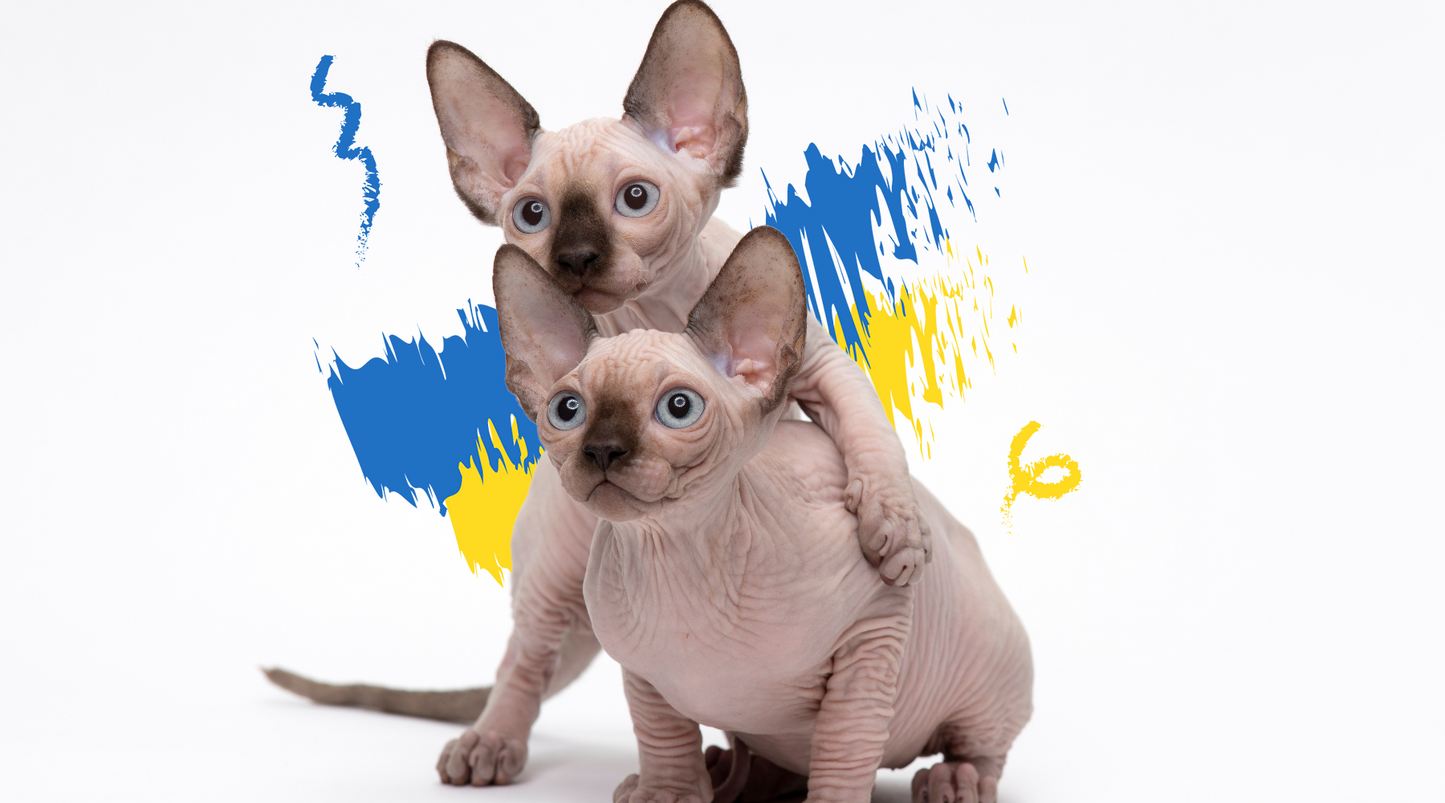
Have you heard of the elf cat breed? This rare and relatively new cat breed is gaining popularity among cat enthusiasts for its unique appearance and personality. In this breed profile, we will cover everything you need to know about elf cats - their history, characteristics, care requirements, and more. Read on to learn all about this hairless cat breed with curled ears!
The elf cat is an extremely rare breed created from crossbreeding two existing breeds - the Sphynx and the American Curl. This experimental breed combines the hairless body of a Sphynx with the distinctive curled ears of the American Curl, resulting in a unique-looking cat unlike any other breed.
In this article, we will explore this rare breed and help you understand if an elf cat is the right pet for you and your family. We'll cover topics like the elf cat's origins, physical features, personality, potential health issues, care requirements, and more. Whether you're looking to adopt an elf cat or are just curious about this unusual breed, you'll find all the information you need right here!
What Does an Elf Cat Look Like?

The most distinguishing feature of the elf cat breed is its lack of fur paired with curled-back ears. This gives them an unusual appearance not seen in other domestic cats.
Elf cats are completely bald like the Sphynx breed they descend from. Their skin may be pale pink, tan, grey, or peach in color. Instead of fur, elf cats have a light "peach fuzz" covering parts of their body. The elf cat's body is slender but surprisingly muscular.
The other signature feature is the American Curl ears. An elf cat's ears curl backward in a delicate curve, unlike the stiff curl of typical American Curl cats. The ears are large and wide-based.
Elf cats can have any eye color - blue, green, yellow, or odd. Eye colors often differ between the two eyes. Their wedge-shaped heads are medium in size with prominent cheekbones and large, upright ears. Whiskers may be short and sparse.
While elf cats come in many colors and patterns, pointed elf cats (with Siamese-style coloring) seem to be the most popular. Their naked bodies show off coat colors and patterns beautifully.
Where Did the Elf Cat Breed Originate?

The elf cat breed originated in the early 2000s and is still in the development stage. Breeders are working to establish the breed and have it recognized by cat registries.
Breeders started experimenting by crossing hairless Sphynx cats with American Curls who have curved ears. The goal was to create a new breed of cats with a distinct look.
The first intentional elf cat hybrids were born in the early 2000s in the United States. Enthusiastic breeders saw potential in combining the hairless Sphynx with the unique-eared American Curl.
Deliberate crossbreeding of these two pedigreed breeds continued for over a decade to stabilize elf cat traits and work toward recognition.
While not yet officially recognized as a cat breed, elf cats have growing popularity among sphynx breeders and cat fanciers looking for a new, rare breed. The World Cat Federation does recognize them as an experimental breed.
What is the Personality of an Elf Cat Like?

Despite their striking appearance, elf cats have pleasant personalities much like other domestic cats. They are intelligent, playful, affectionate, and highly social.
Elf cats form strong bonds with their human families. They crave attention and interaction. With proper handling when young, elf cats become very friendly and sociable with strangers too.
These cats tend to be active and energetic. Elf cats love toys and enjoy playing games like fetch with their owners. Keeping your elf cat entertained and exercised is important.
Elf cats thrive on human interaction and don't like to be left alone for long periods. They will follow their owners around the house. Elf cats enjoy being held and cuddled.
Since the breed is quite rare, elf cats are often more expensive to purchase than traditional breeds. Reputable elf cat breeders can be difficult to find.
What Are the Care Requirements for Elf Cats?

While their unique look might fool you, elf cats require care similar to other hairless breeds like the Sphynx. Their lack of fur means they need special attention.
Grooming
Elf cats lack the fur that protects most cats' skin. Therefore, their skin needs regular cleaning. Using a damp, warm washcloth, wipe your elf cat's body every 1-2 weeks to remove oil buildup. Pay special attention to wrinkles.
Temperature Regulation
Being hairless, elf cats easily get cold. They need to live exclusively indoors in a warm, draft-free environment. Make sure your elf cat has soft blankets and a wardrobe of cat sweaters for snuggling into.
Sun Protection
An elf cat's exposed skin gets sunburned easily. Always apply pet-safe sunscreen before letting your elf cat enjoy the outdoors. Limit sun exposure to small periods of time.
Diet
Hairless cats need a higher caloric intake than furred breeds. Feed a high-quality cat food and monitor your elf cat's body condition. Adjust food intake as needed to maintain proper weight.
Health
Elf cats are predisposed to health issues seen in hairless breeds like dental problems and upper respiratory infections. Work closely with your vet for preventative care.
Are Elf Cats the Right Pet for You?

Before bringing home one of these unique cats, make sure you can properly care for its needs. Elf cats require time, attention, and special considerations that prospective owners must be prepared for.
Elf cats thrive with interactive owners who don't work long hours away from home. These sociable cats need companionship. If you lead a busy lifestyle, an elf cat may not be the right pet for you.
Since they lack fur insulation, elf cats rely on their owners to provide temperature-controlled environments. If you live in very hot or cold climates, an elf cat would not be comfortable.
Additionally, your home must be 100% smoke-free, as elf cats' respiratory systems are sensitive. These cats are also unsuited for homes with dogs or young children who might accidentally hurt them.
While their special requirements rule them out for some owners, elf cats make delightful pets for the right individuals. Their friendly personalities and striking looks make them a unique addition to any cat-loving home.
Key Takeaways on the Elf Cat Breed:
- Elf cats are a rare experimental breed created by crossing hairless Sphynx cats with American Curls. This gives them distinctive curled ears and bald body appearance.
- They have playful, affectionate personalities and bond strongly with their owners. Elf cats crave interaction and companionship.
- Due to their lack of fur, elf cats need special care including skin cleaning, temperature regulation, sun protection, and a high-calorie diet.
- Elf cats are best suited to quiet, draft-free indoor homes with adults or older children. They require attentive owners who are often at home.
- While still establishing the breed, elf cat breeders aim for full recognition by cat registries in the future. This unique cat is gaining popularity among sphynx and cat fanciers.
The elf cat is an exceptionally rare and eye-catching breed. For the right owner, they make charming pets. We hope this overview gave you a deeper understanding of the elf cat's origins, looks, personality, care, and status as an emerging breed. Let us know if you have any other elf cat questions!
